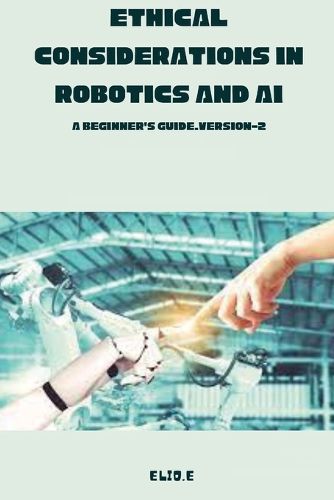Readings Newsletter
Become a Readings Member to make your shopping experience even easier.
Sign in or sign up for free!
You’re not far away from qualifying for FREE standard shipping within Australia
You’ve qualified for FREE standard shipping within Australia
The cart is loading…






This title is printed to order. This book may have been self-published. If so, we cannot guarantee the quality of the content. In the main most books will have gone through the editing process however some may not. We therefore suggest that you be aware of this before ordering this book. If in doubt check either the author or publisher’s details as we are unable to accept any returns unless they are faulty. Please contact us if you have any questions.
Guidelines and standards for building and deploying robots and AI systems
are provided by ethical frameworks. These guidelines assist make
sure that AI is developed and deployed in a way that benefits society as a whole,
upholds basic human decencies like justice, openness, and accountability, and
does as little harm as possible. Here are a few of the most well-known ethical
models used in the study and development of AI and robotics today: Utilitarianism
is an ethical theory that says decisions and innovations should be
measured by how much benefit they provide for the most people. Utilitarianism
would place an emphasis on robotics and AI systems that maximise advantages
while minimising drawbacks.Adherence to moral standards and principles is
emphasised in deontological ethics. It stresses people's intrinsic worth and
freedoms. This approach would demand the creation of ethically sound systems
in robotics and AI that put people's rights, autonomy, and privacy first, no
matter the consequences.Virtue ethics is a moral theory that promotes the
cultivation of admirable personal qualities. When applied to robotics and
AI, this paradigm would encourage the development of character traits like
compassion, empathy, and accountability in the creation and usage of robots
and AI. It pushes artists and architects to think about how their work will age
5 SDRBC2FACLMWBKS32DBLMWABMA3L4LDBCWA2MKA2B
in the context of society.Ethical theory grounded in respect for the rights of
individuals. Protecting human rights in the context of AI and robots means
making sure that people's right to privacy, to speak freely, and to be treated fairly
are not violated. It also takes into account the rights of AI systems, such as the
right to be treated fairly and the right to be safe from exploitation.Frameworks
for ensuring fairness and justice in the creation and use of AI and robots attempt
to eliminate prejudice and unfair treatment.
$9.00 standard shipping within Australia
FREE standard shipping within Australia for orders over $100.00
Express & International shipping calculated at checkout
This title is printed to order. This book may have been self-published. If so, we cannot guarantee the quality of the content. In the main most books will have gone through the editing process however some may not. We therefore suggest that you be aware of this before ordering this book. If in doubt check either the author or publisher’s details as we are unable to accept any returns unless they are faulty. Please contact us if you have any questions.
Guidelines and standards for building and deploying robots and AI systems
are provided by ethical frameworks. These guidelines assist make
sure that AI is developed and deployed in a way that benefits society as a whole,
upholds basic human decencies like justice, openness, and accountability, and
does as little harm as possible. Here are a few of the most well-known ethical
models used in the study and development of AI and robotics today: Utilitarianism
is an ethical theory that says decisions and innovations should be
measured by how much benefit they provide for the most people. Utilitarianism
would place an emphasis on robotics and AI systems that maximise advantages
while minimising drawbacks.Adherence to moral standards and principles is
emphasised in deontological ethics. It stresses people's intrinsic worth and
freedoms. This approach would demand the creation of ethically sound systems
in robotics and AI that put people's rights, autonomy, and privacy first, no
matter the consequences.Virtue ethics is a moral theory that promotes the
cultivation of admirable personal qualities. When applied to robotics and
AI, this paradigm would encourage the development of character traits like
compassion, empathy, and accountability in the creation and usage of robots
and AI. It pushes artists and architects to think about how their work will age
5 SDRBC2FACLMWBKS32DBLMWABMA3L4LDBCWA2MKA2B
in the context of society.Ethical theory grounded in respect for the rights of
individuals. Protecting human rights in the context of AI and robots means
making sure that people's right to privacy, to speak freely, and to be treated fairly
are not violated. It also takes into account the rights of AI systems, such as the
right to be treated fairly and the right to be safe from exploitation.Frameworks
for ensuring fairness and justice in the creation and use of AI and robots attempt
to eliminate prejudice and unfair treatment.